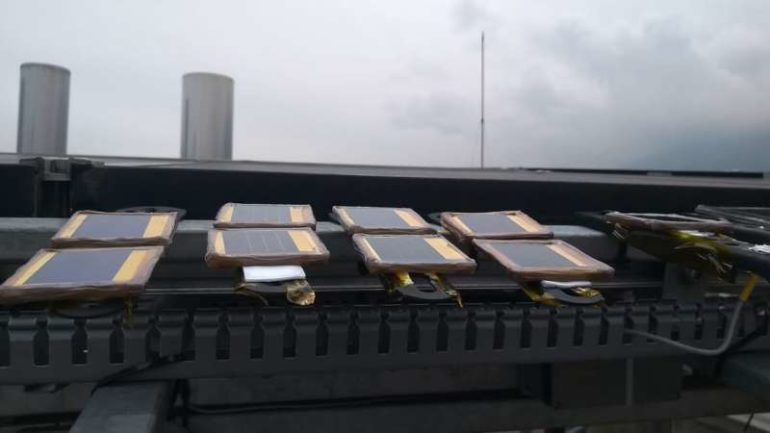In recent years, researchers have been developing a wide range of technologies designed to convert renewable energy sources, such as sunlight and wind, into electrical energy. This includes solar or photovoltaic (PV) cells, devices that can convert light into electrical energy and are typically combined to form solar panels.
Halide perovskites, which have a characteristic crystal structure, are particularly promising for the creation of solar cells, as they have a number of advantageous properties. Solar cells made of perovskites, in fact, typically have numerous qualities, such as ion migration, low non-radiative recombination and a low performance dependence on temperature. Due to the unique characteristics of this system in comparison with conventional photovoltaics, evaluating solar cells made of halide perovskites using standard PV evaluation procedures might not be ideal.
With this in mind, researchers at Universidad de Antioquia in Colombia and Jaume I University in Spain have recently developed a new methodology that could be used to test the performance of perovskite solar modules outdoors. This evaluation strategy, presented in a paper published in Nature Energy, could help to identify the strengths and limitations of solar devices more reliably and effectively.
“The basic idea behind our study was to characterize the outdoor performance of perovskite modules, not just by monitoring the performance but the evolution of the physical processes causing the module degradation,” Iván Mora-Seró, one of the researchers who carried out the study, told TechXplore. “This methodology will help in the optimization of the new solar technology in real working conditions and could be transferred to other emerging photovoltaic technologies.”
When solar cells are tested outdoors, it is impossible to control experimental conditions (i.e., illumination or other environmental factors), as researchers typically do in laboratory settings. Therefore, Mora-Seró and his colleagues, Esteban Velilla and Franklin Jaramillo, tried to leverage the natural day-night cycle to test the performance of solar modules under different light intensities.
“We use the change of the cell properties with illumination, concretely the change of the open circuit potential, in order to calculate the ideality factor of the cell,” Mora-Seró explained. “This feature supposes a qualitative improvement from the standard module monitoring, as the ideality factor provides information about the recombination mechanism governing the cell performance.”
The researchers compared the results obtained using their solar module evaluation method with those gathered when following standard solar cell evaluation procedures. They found that their method allowed them to gather more comprehensive data related to the physical processes governing the performance of the solar modules.
The methodology devised by Mora-Seró and his colleagues can be used to track the physical processes that take place in the perovskite-based solar modules when they are operating outdoors. Remarkably, it allowed the researchers to clearly observe both a cell’s degradation over time and the causes for this degradation.
In the future, their method could be used to test the performance of perovskite based solar devices with higher levels of precision and reliability. This could ultimately help to optimize and improve these emerging technologies, assisting engineers who are trying to determine whether they are ready for implementation on a large scale.
“We now plan to implement this study to different modules fabricated with different processes, configuration and encapsulation looking for the optimization of perovskite solar cell modules facing their future commercialization,” Mora-Seró said.
Two-sided solar cells can collect scattered light to gather more energy
More information:
Esteban Velilla et al. High-throughput analysis of the ideality factor to evaluate the outdoor performance of perovskite solar minimodules, Nature Energy (2021). DOI: 10.1038/s41560-020-00747-9
2021 Science X Network
Citation:
A method to track the outdoor performance of perovskite solar minimodules (2021, January 22)
retrieved 22 January 2021
from https://techxplore.com/news/2021-01-method-track-outdoor-perovskite-solar.html
This document is subject to copyright. Apart from any fair dealing for the purpose of private study or research, no
part may be reproduced without the written permission. The content is provided for information purposes only.


